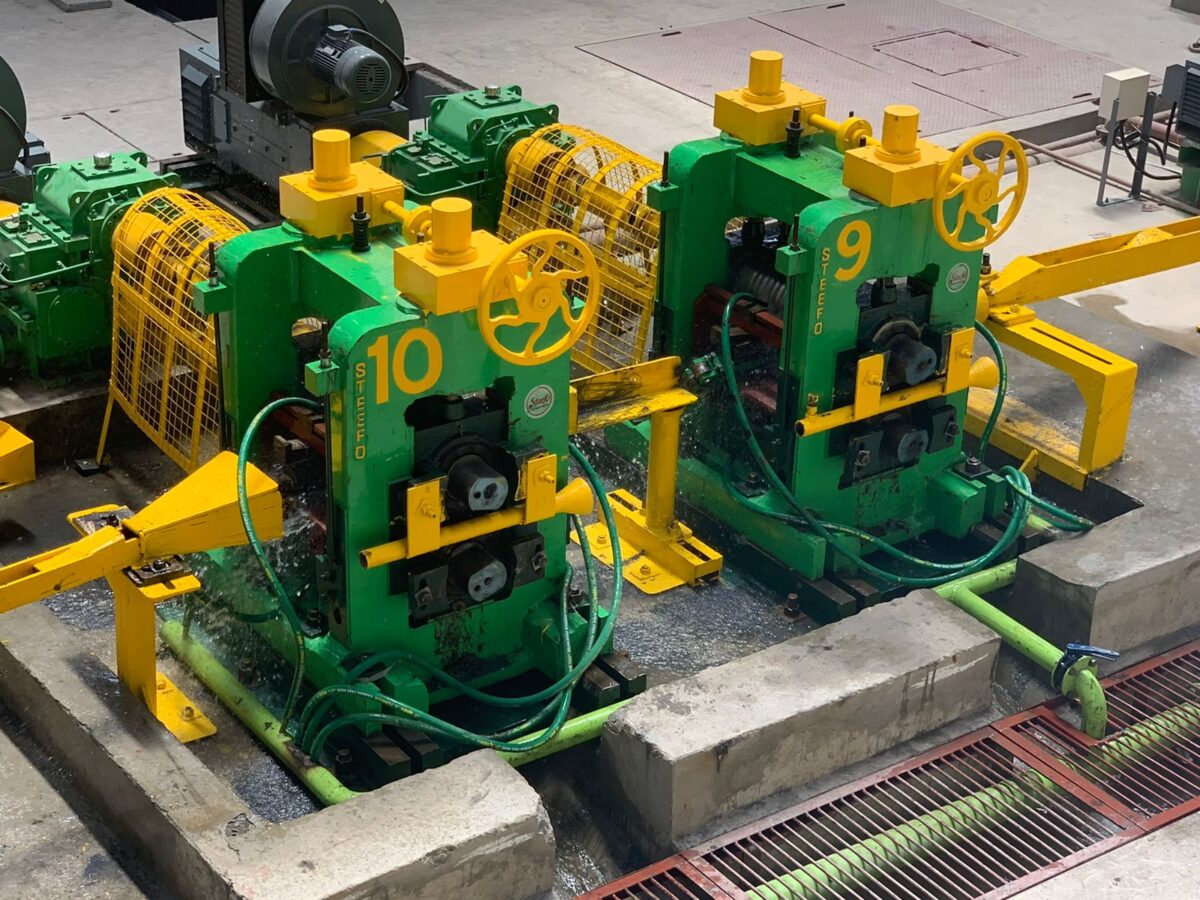Mill stands are one of the most crucial pieces of equipment in the entire rolling mill process. A mill stand is usually fit with numerous rolls via which the workpiece bar goes through, achieving its necessary cross-section. Several mill stand designs serve different purposes in the rolling process.
Housing-less Mill Stand
A Housing-less mill stand is specifically designed to create superior quality TMT bars, wire rods, channels, bars, universal beams, angles and more. The housing-less mill stand can do this effortlessly due to its rigidity and roll change abilities. These mill stands are usually also equipped with complete automation, especially during the connection and disconnection of fluid utilities and spindles. This automation assists the mill stand in becoming more efficient and quick in comparison to others. Housing-less mill stands also have a reduced stress path, screw-down automation, axial roll adjustment abilities along with complete automation, self-balancing spindle and reduced backlash. Roll change is easier in the same.
2-HI Conventional Mill Stand
A 2-HI conventional mill stand has two work rolls that are pressed together with enormous force. The 2-HI mill stand contains non-reversing rolls that rotate in the same direction, which means that the workpiece bar cannot be fed from the other direction. A 2-HI stand either has to be a vertical or a horizontal stand.
3-HI Conventional Mill Stand
A 3-HI mill stand is essentially needed in hot rolling reversing mills without switching the order of rotation of the rolls. In this type of mill stand, there are three working rolls. The top and bottom roll rotate in the same direction; meanwhile, the centre roll turns in the opposite direction. This is important as the workpiece bar keeps passing back and forth alternately through the rolls without reversing the direction in which the roll turns.
Pre-Stressed Mill Stand
Pre-stressed mill stands are different from conventional mill stands. In this case, the mill is already pre-stressed with the help of hydraulic four nuts. This allows them to be prepared with the highest force needed for rolls operating during the rolling period. The process allows any deflection of the mill stand to be avoided, especially under the rolling load.
Universal Mill Stand
A universal mill stand is a rolling stand that rolls in four ways. It is used in the rolling section where the section is shaped from all four sides. There are two vertically and horizontally mounted rolls in a universal mill stand. The vertical rolls are inactive and are positioned amid the bearing chocks of the horizontal rolls in the vertical plane. The vertical rolls are essentially present to manage the width of the bar during the rolling process.
Convertible Stands
Convertible mill stands allow conversion in the positioning. The stand allows either vertical or horizontal positioning during the intermediate finishing, depending on the production requirements. Convertible mill stands are convenient due to their speed during changing positions. It takes less than two minutes to do so. The stand rigidity is also an added advantage. The quick stand change system also does require any crane support and is equipped with reduced fountain depth.
Cantilever Stand
A cantilever stand is quite similar to a block mill, has both horizontal and vertical configurations, and can be configured to meet the client’s design requirements. The sleeve bearing on which the rolls are mounted can achieve high speeds and produce wire rods ranging from 5.5mm to 8mm. The rolls are essentially small discs placed on the cantilever shafts and are available for one or two passes. The material o the roll is often hard and is created out of tungsten carbide.
Vertical Mill Stand
This up-drive type comprises a roll stand, mill spindles, a vertical gear reducer, a pinion stand, and a motor. To protect them from the roll cooling water and mill scale, the gear reducer and motor are installed on a concrete frame. There is also a lifting device under the roll stand that is installed to manage the position of the caliber to pass the level. The roll stand can be moved to the work side during stand changing.
Horizontal Mill Stand
The horizontal mill stand comprises of a roll stand, mill spindles, a pinion stand, a gear reducer and a motor. In the case of a regular pass line, the roll stand slides on the exterior of the sole plate. In a low-speed rolling mill with less than 10 m/sec, the pinion stand and gear reducer are from a single unit. A cross pin joint is used for the mill spindle and is supported by the spindle carrier during rolling.
Bottom line
In a rolling mill, rolling mill stands are used for several purposes, including generating billets, slabs, blooms, bars, plates and other sheet products. Rolling mill stands were initially used for steel casting, but today they are usually created from cast slabs or rolled plates.
